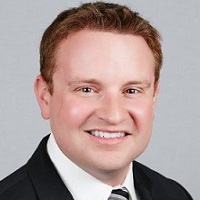 Interviews with Justin Campbell, VP Marketing, Galen Healthcare Solutions
Interviews with Justin Campbell, VP Marketing, Galen Healthcare Solutions
Twitter: @GalenHealthcare
Out with the old, in with the new. Often times, when a new CIO is hired, change within the organization is inevitable, if not expected of the new sheriff in town. Every CIO has a unique story. Galen Healthcare Solutions, an IT technical and professional services and solutions company, interviewed several CIOs to discuss their experiences. Here are excerpts from a few of those conversations:
Robert Napoli, SVP, CIO, Planned Parenthood of the Great Northwest and the Hawaiian Islands
When he first joined Planned Parenthood of the Great Northwest and the Hawaiian Islands three and a half years ago, Robert Napoli began a rip and replace of their entire system, and in the end, the only thing that remained was the telecommunication system. Once he was finished redesigning and replacing, he moved on to strategic initiatives including BI and analytics strategy, mobile health, patient engagement, and more. With experience on both the acute care and ambulatory side, Napoli offers up a unique perspective on the harmonization of clinical data. In this interview, Napoli discusses what he’s done, where he’s going and the question on everyone’s mind: what’s happening with the potential defunding of Planned Parenthood?
We decided to build our own data warehouse because there weren’t any viable options available through the national office or another affiliate. During the requirements gathering phase of this work, we heard anecdotally from many of our business leaders who expressed a desire to benchmark our measures against other affiliates or even those of other organizations. We’ve recently partnered with OCHIN, Inc. located in Portland, for our EHR template customizations and they offer an extremely robust real-time healthcare-specific data aggregation tool called Acuere that would provide this benchmarking. We’re impressed with Acura’s capabilities and are moving forward with a subscription. However, its ultimate usefulness and value are dependent on our end user adoption and whether other affiliates see the value in a data aggregation tool and participate in the program.
We share data with OneHealthPort, which is the Washington State HIE, so the interfaces and configuration necessary to exchange that data are in place. However, this is a state requirement if you see Medicaid patients and there isn’t much of a business case for participating without this mandate. There is, however, a huge business need to share patient data across the federation since most patients don’t realize that our affiliates (even those that are near one another) are independent, stand-alone organizations with separate EHRs, unique patient identifiers and completely closed data systems. Our patients are often surprised that their medical record is not universally accessible in all our health centers since we present a unified brand.
Daniel Morreale, Senior Vice President/CIO, Hunterdon Healthcare System
After inheriting the multi-system environment of Hunterdon Healthcare System two years ago, Daniel Morreale has been evaluating a rip and replace initiative, moving to one core system. That’s not the only change Morreale hopes to make at the healthcare system. He’s inspired by the world of social media and the connections it can extend. In this interview, Morreale talks about the “membership model” for healthcare he’s looking to implement; the ups and downs of data archival and storage; and Hunterdon’s current data governance strategy. He also shares his personal predictions for the future of healthcare and bringing the focus away from the toys and back to the people.
I think there is a whole field of healthcare to be discovered in social media. How do we capture that? How do we use that to attract future patients? Most health systems tend to grow by buying physician practices or expanding their market, which is a pretty traditional means of doing that work. However, I think an extraordinarily strong mobile presence and web presence can start to attract the 20 and 30 year olds who aren’t really using healthcare now, who I want if I’m in a shared risk environment.
I think the value proposition around that has to be very high, but it’s certainly difficult to compute. My development team is looking at creating what we’re calling a ‘membership model’ for the health system. It’s essentially taking the concepts around Netflix and American Express: you become a member, and incorporate that into how I deliver care. If I can convince you to be a member, I can give you one telephone call scheduling; I can stop leakage out of my physician offices by scheduling your next appointment as you’re walking out the door; or schedule that x-ray or that minor surgery you might need. I can broadcast educational information to your mobile or home device. I can create social platforms for you to talk to other people with your disease state. I can do all of those things as a background product, but at the same point I’m creating that sticky relationship between you and my health system.
Thank you to Galen Healthcare Solutions for sharing these important interviews with today’s thought leaders in our industry. We will be highlighting them throughout the summer, stay tuned. Read our series.
